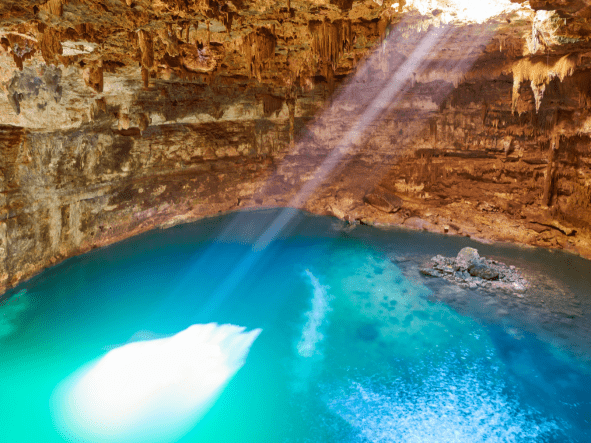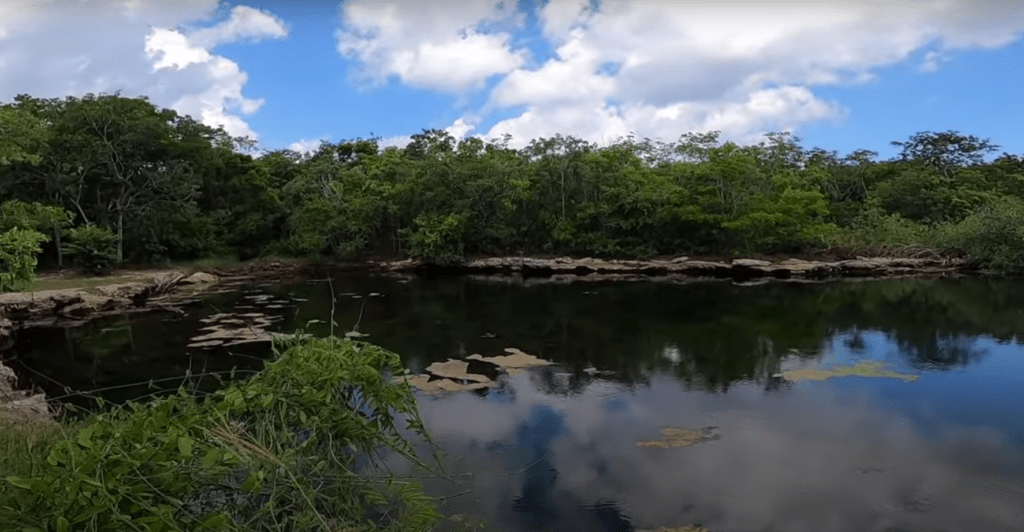The Best Cenotes in Yucatan Peninsula
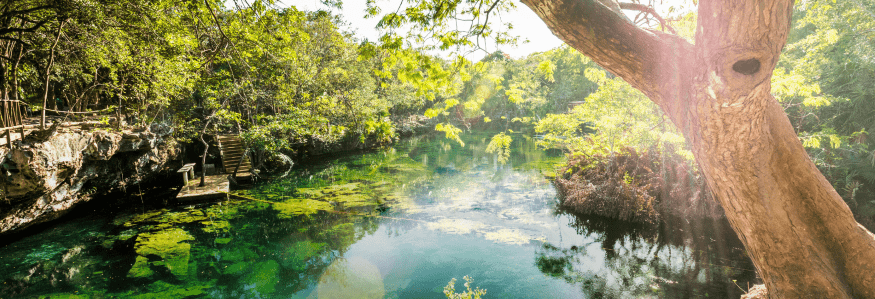
From Cancún to Tulum to Mérida, we’ve got you covered!
If you’ve never been to Mexico cenotes, you’re in for a treat! Some of the best swimming holes on Earth are these freshwater sinkholes, and they are mainly found in one part of the world, Mexico’s Yucatán Peninsula.
It’s nearly impossible to know exactly how many cenotes there are in Mexico’s Yucatán Peninsula, but for sure there are more than 7,000 cenotes, with over 2,200 cenotes being registered. At least 900 cenotes of these cenotes are considered to be a part of the ‘Ring of Cenotes’ located near the city of Merida.
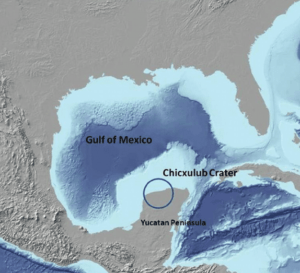
The most famous cenotes are located within easy travel distance of Mexico’s Riviera Maya. You’ll find many cenotes you can visit near tourism hotspots like Cancun, Tulum, Playa del Carmen, Valladolíd, and Mérida.
What is a Cenote?
A Cenote is a natural sinkhole, underground chamber or cave typically found in sedimentary limestone rock which contains permanent water.
The word cenote is pronounced seh-NO-tay.
The Mayan word for cenote is d’zonot, or ts’onot, meaning well.
Cenotes are connected to underground rivers and subterranean water systems. Its water is usually incredibly crystal clear, as it’s filtered through the ground for sometime.
The Yucatan is home to some of the world’s longest known underground cave systems. The Sistema Sac Actun, is the world’s longest underground cave measuring 350 km. At its deepest it measures 119 m and is home to over 226 cenotes.
Human bones dating 9000-years-old as well as the bones of animals that walked the planet around the time of the ice age have been found in this cave system.
Cenotes are a significant source of water in the Yucatan Peninsula as there are no rivers. Thousands of cenotes have become popular destinations for locals and tourists to escape the jungle heat.
Types Of Cenotes

Cenotes come in many different types of different shapes and sizes. The most common types of cenotes are cave cenote, semi-open cenote and open cenotes. Cave (closed) cenotes are the newest type and the open cenote is the oldest as its cave ceiling has fallen into itself.
Open air cenotes are cenotes whose walls have collapsed in on them, and they are exposed to the sky. Some are surrounded by vegetation and may appear more like lakes.
Semi-open cenotes have parts that are open to the sky and parts that are closed.
Closed cenotes, or cave cenotes, are cenotes that are completely covered.
Underground cenotes, or ancient cenotes, are underground cenotes that have yet to be discovered.
Beside those types, there are two broad categories of cenote experiences.
Modern cenotes have facilities like a pool, restaurant, and/or outdoor lounge areas built around them. Some hacienda cenotes are full-blown resorts, with modern accommodations and activities like 4 wheeling.
Wild cenotes have few or no facilities. They could have as little as a single toilet and one employee collecting admission fees.
The Chicxulub Crater

The Yucatan Peninsula is, in fact, a large reef that served as the floor of a sea thousands of years ago, until the sea level dropped and exposed it to present-day Mexico.
An asteroid (10-15 kilometers in diameter) impacted Earth 66 million years ago, causing a mass extinction. The impact created what is known as the Chicxulub Crater.
This huge impact altered the limestone sediments below the earth’s surface of the region, making it more vulnerable to erosion. Although there are numerous cenotes in Mexico’s Yucatan Peninsula, a “Ring of Cenotes” was formed as a result of the asteroid that has been linked to the dinosaur extinction.
Mayans and Cenotes
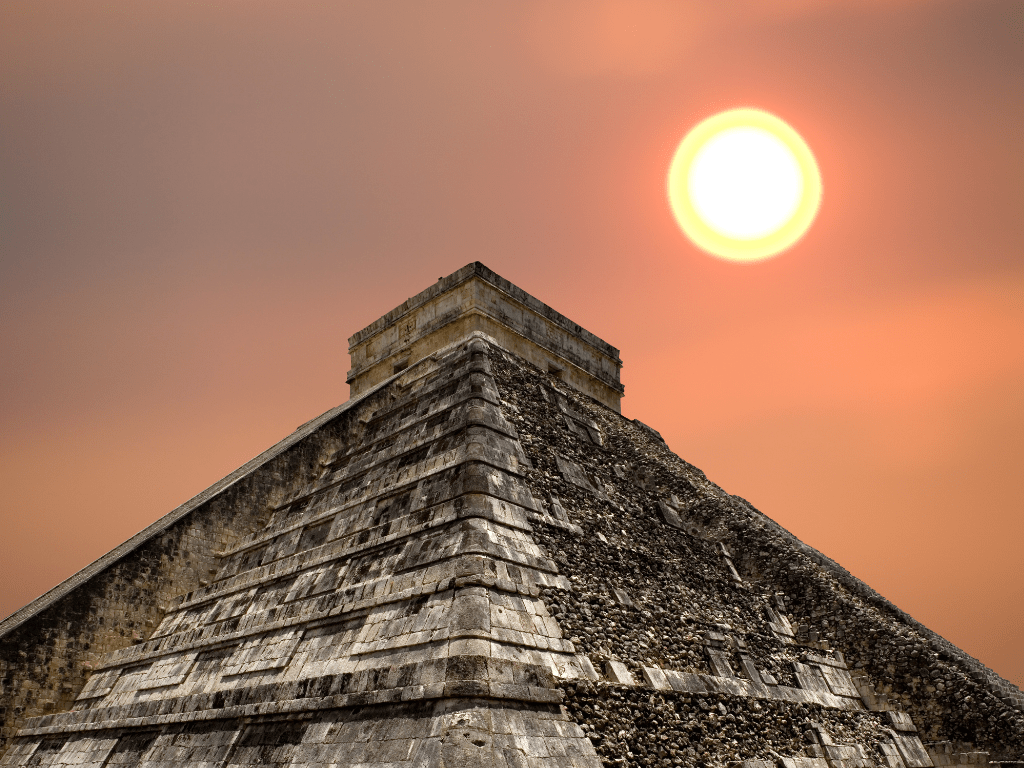
Cenotes were revered sites for the Ancient Mayans. While cenotes were their main water source, they were also considered to be the entrance to the Xibalba, taken to the underworld, and a place where the Mayan gods would visit, especially Chaac, the Mayan rain god.
They are so important that most temples and villages were built close by or that the Mayans built on top of cenotes, such as Chichen Itza.
Cenotes acquired religious significance as sites where sacrifices and rituals were carried out to please the gods by the ancient Maya. Archaeologists have discovered sacrificial objects such as jade, ceramics, gold, and incense at the bottom of sacred cenotes along with human bones and animal skeletons.
Cenotes are still an important water supply for the peninsula today. They have also grown in popularity among millions of tourists who come to visit these spectacular natural wonders and swim, dive, and discover its fascinating curiosities.
What Can You Do In A Cenote?
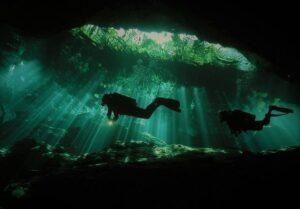
You can swim and soar on rope swings! It’s a great place to use your snorkel gear and for scuba divers! You may have fun cliff jumping into some of them! (In certain cases, your only option is to dive in.)
Cenotes are the greatest place to cool off on Earth. This is one of the reasons why cenotes and Mayan ruins go so well together! The Riviera Maya which is located in Mexico’s Yucatán Peninsula is hot, and after a few hours in the sun, you’ll be ready for a swim.
Yucatan’s Best Cenotes
So, which Mexico cenotes are the finest? Everyone has their own preferences, but these are the Mexican cenotes that we feel are exceptional.
Visit Cenotes That Are Not So Crowded
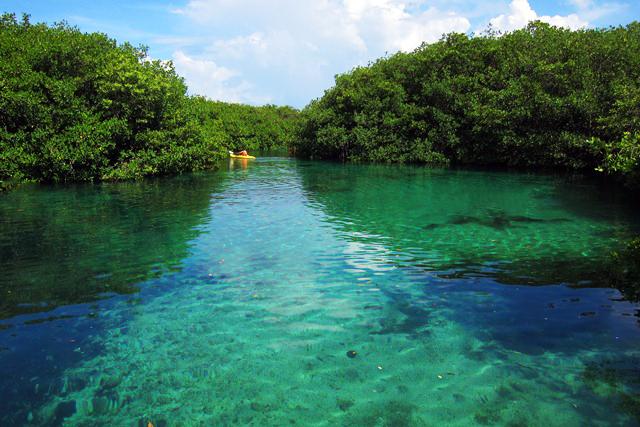
Casa Cenote
This open cenote is almost river like. It's one of the most unusual and spectacular in the Tulum and Playa del Carmen area. Cenote Manati was so named because it used to be frequented by manatees. It is easily reached via an unpaved road located around 2.5 miles north of Tulum. The entrance is $150 pesos, which includes a life jacket with lockers available for 50 pesos. This is also a popular scuba diving location as well.

Cenotes Cristalino & Escondido
Two beautiful open-air cenotes just minutes outside of Tulum. Cenote Cristalino and Escondido are very close neighbors, located just across the road from each other. Their proximity makes them both worth exploring on the same excursion. They have a great swimming pool and platform for jumping. $120 pesos is the entrance fee but gives you both large cenotes.

Cenotes Yaxmuul
Cenote Yaxmuul is next to Jungla Maya Park, located just about 15 minutes north of Tulum. This beautiful park offers a Mayan ritual and 2 crystalline underground cenotes It is not so well known in the Riviera Maya as of yet but that means less noise and typically small crowds. The site lies off the beaten path and to reach the cenotes, you'll need to travel down a dirt road for a mile or so. Packages frequently include driving ATVs through the jungle to get there, which adds to the adventure element. There are a couple zip lines and opportunities to rappel in the area and a very good restaurant that serves alcoholic drinks. Prices vary depending on the features you choose but are around $20 USD.
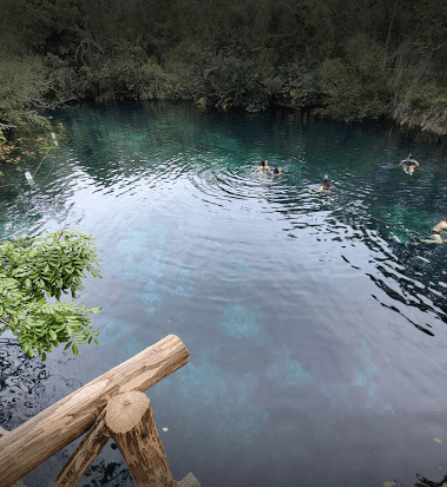
Cenote Aktun-Ha
In the past, Aktun-Ha (translated as car wash cenote) was mainly used by taxi drivers to gather and wash their cars! A beautiful, shallow open cenote with a cave section filled with stalactites. Aktun-Ha is a wonderful place to swim and snorkel. Awesome underwater rock formations, tropical fish and sometimes turtles can be seen through the clear water. It’s a great place for inland snorkeling. A nice wooden deck along the edge is excellent for laying in the sun or jumping into the water. Aktun-Ha is easy to access as it's just off the road between Tulum and Coba in the state of Quintana Roo. There is a $250 pesos entrance fee.
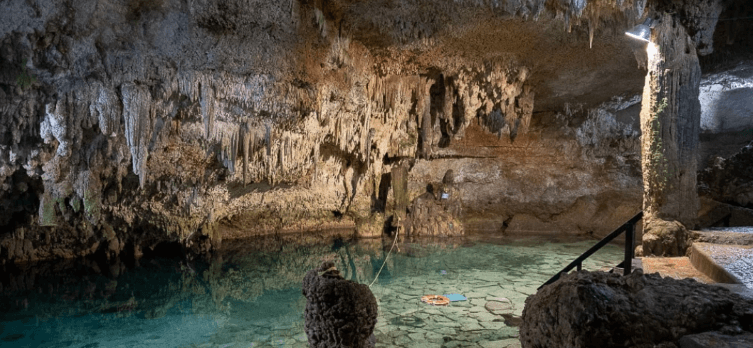
Cenote Choo-Ha
Near the Maya ruins of Coba in Tulum and south of Playa del Carmen, is a series of three cave cenotes. Its name translates to "water that drips" because of the many many stalactites in these cenotes. There is a long wooden stairway that can be steep for some but it's your entryway to the underground. The entrance fee is $100 pesos.
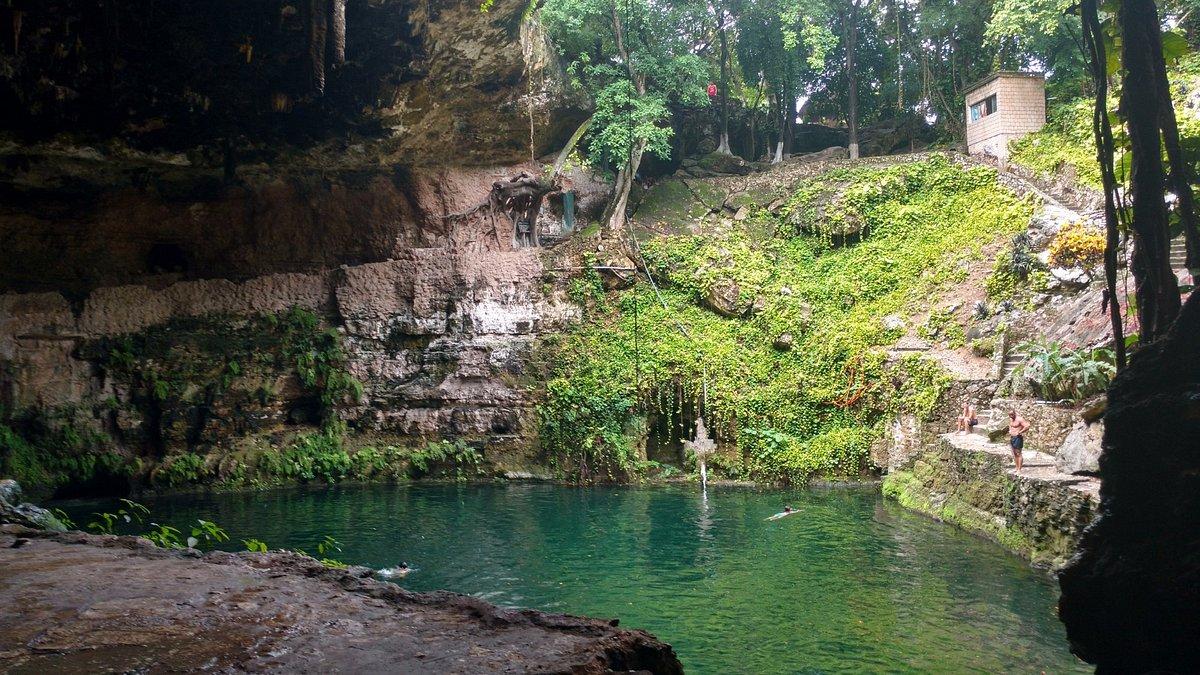
Cenote Zaci-Ha
If you venture a little inland from the Riviera Maya, you'll come across Valladolid and its massive Cenote Zaci-Ha. Only a portion of this enormous cenote is covered which allows for beautiful rays of sunlight to stream in. The cenote is located in the middle of Valladolid so it's very easy to access. It has landscaped grounds with a restaurant offering a freshwater underground cenote & cave exploration. The water is 100 meters deep in some places! It’s just $30 pesos to enter as long as you spend $100 pesos in the restaurant.
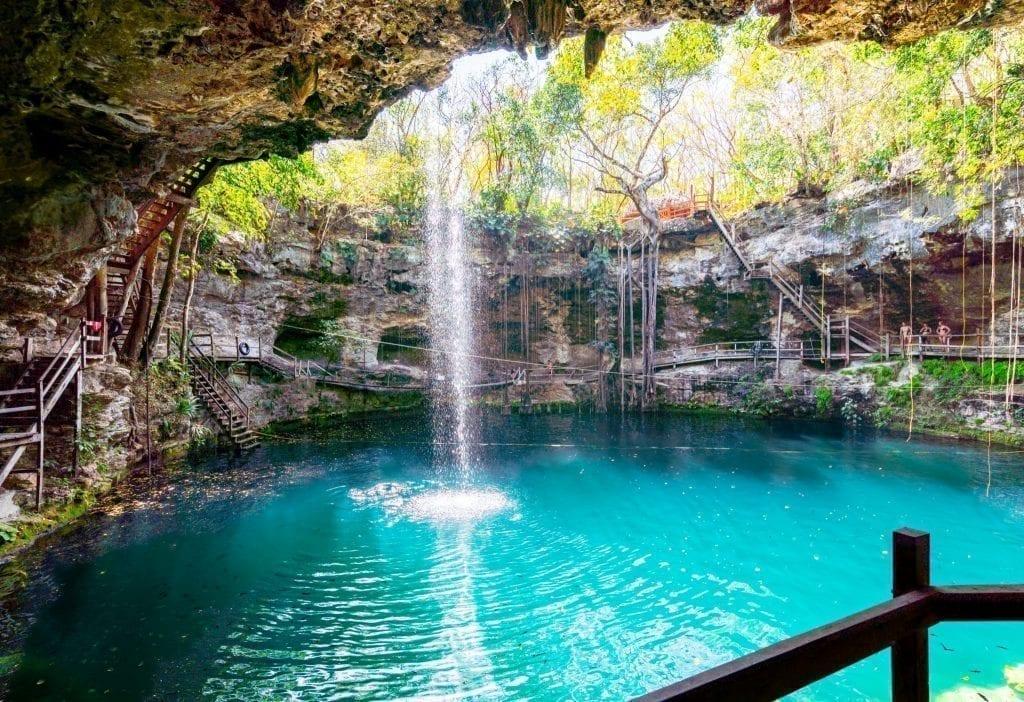
Cenote X'Canche
At Cenote X’Canche you have not just a cenote but also a small recreational area adjacent to the Ek Balam Archaeological Site. You can reach it via a 2-kilometer path just inside the Ek Balam entrance gate. There is the option to walk, rent a bicycle, or hire bicycle taxi The cenote requires climbing down wooden stairs to the water level. There are platforms for jumping and a short zip line, where you can glide over the water before dropping in from about 10 feet up. The entry fee is $150 pesos.

Cenote Oxmán
The lovely and calm Cenote Oxman is a Yucatan Peninsula treasure. This subterranean cenote is located in a collapsed cave, with natural light and hanging vines cascading into it. There's also a rope swing where guests can go for some fun in the water. Near Valladolid, Cenote Oxman is in the Hacienda San Lorenzo Oxman. It comes with a pool and a restaurant so you can spend the entire afternoon in this cenote cristalino. Great way to spend an afternoon. There are three entrance options ranging from $70 to $150 pesos, depending on pool access and if you want restaurant credits.
Visit Cenotes That Can Get Crowded

Gran Cenote
Gran Cenote is one of Mexico's most renowned and popular cenotes, and it's actually a string of cenotes connected by an underwater tunnel. The main cenote is a twisting river-like open-air cenote that meanders around and is great for swimming and snorkeling. There are a variety of cave areas for exploration, as well as attractive surrounding rock formations and jungle. This is a popular tour destination between Tulum and Coba. The entrance fee is $500 pesos which includes snorkeling equipment. You must visit Gran Cenote if you are visiting cenotes at all.
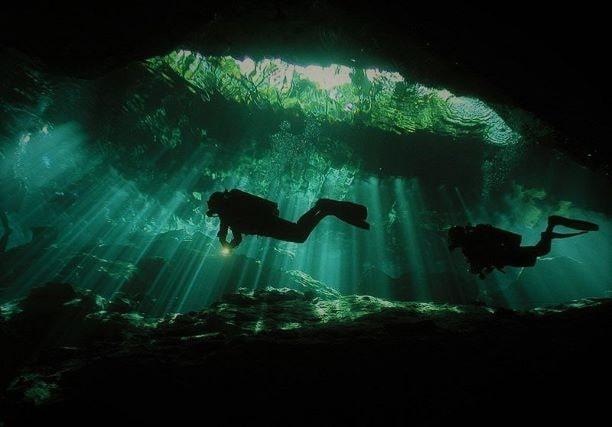
Cenote Dos Ojos
The name Cenote Dos Ojos means "two eyes." It's a big ring-shaped cenote with plenty of room to explore. In addition to being a cave cenote, the sun can shine on the water in the afternoon, really illuminating the sacred cenote. Cenote Dos Ojos is great for snorkeling. There are fish, turtles, and an abundance of incredible stalactites and stalagmites. Large areas for drying off and relaxing in hammocks are perched by the waterside. Located between Playa del Carmen and Tulum, this popular cenote is part of the Parque Dos Ojos park. The cost is between $200 to $700 pesos depending on your amenities chosen.
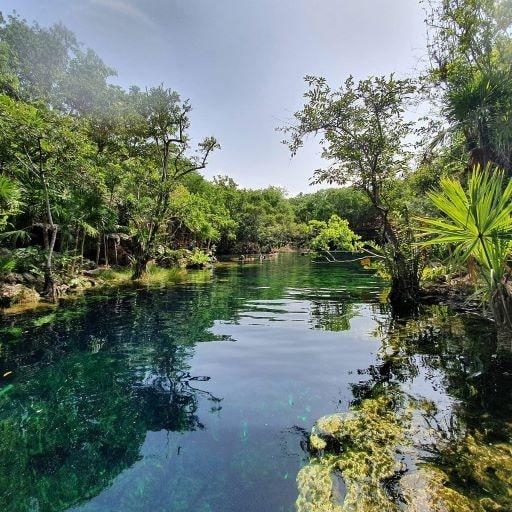
Cenote Ponderosa (Jardin del Eden)
Cenote Ponderosa is known as Jardin del Eden, the Garden of Eden. Cenote Ponderosa is a large open-air cenote surrounded by a lush jungle and rocky outcroppings, with vivid turquoise water on all sides. The big cenote is popular for swimming, snorkeling, and scuba diving. Like many of the cenotes on this list, it's located in the state of Quintana Roo near Tulum and Playa del carmen. The Jardin Del Eden is quite crowded during the afternoons and on weekends, therefore mornings and weekdays are preferable for getting away from the masses. The entrance fee is $200 pesos for adults and $100 pesos for children.
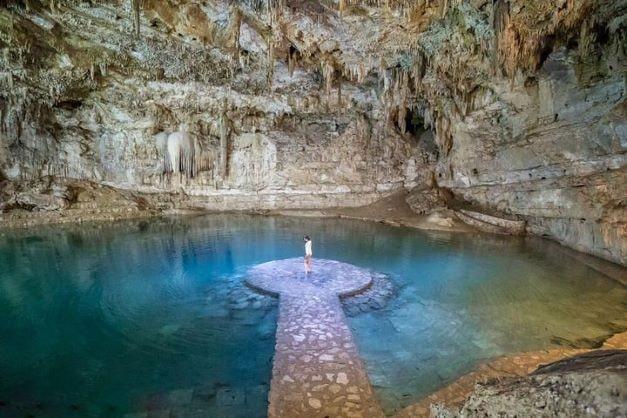
Cenote Suytun
Cenote Suytun is one of Mexico's most Instagrammed cenotes, with a stone walkway leading to a circular platform in the center of its vast round pool. Cenote Suytun is a popular stop on cenote tour excursions and for good reason. More beautiful than most cenotes is this massive cenote near Valladolid. The cave walls are a light gray color set against the brilliant blue water, with towering stalactites. Perfect for a dip and a photo shoot, but often crowded. The entrance fee is around $120 to $230 pesos depending if you include a meal/buffet.
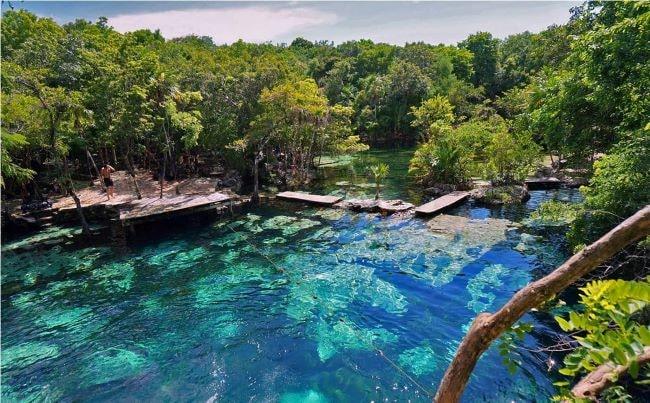
Cenote Azul
Cenote Azul, a magnificent complex of turquoise blue cenotes. Of the many cenotes to choose from, Cenote Azul is a popular destination for locals and visitors alike. On weekends, the abundance of lovely shallow and deep pools, restaurants and picnic areas, cliff jumping, snorkeling, and more make this an appealing location for families and individuals who don't mind the throngs. Cenote Azul is located between Playa del Carmen and Tulum. The entrance fee to Cenote Azul is $70 pesos.

Cenote Ik-Kil
Cenote Ik-Kil is located close to the Maya Ruins of Chichen Itza, on the highway to Valladolid. It is arguably one of the most beautiful cenotes of Mexico. In order to reach the water you have to climb down 100 feet and the cool water is 120 feet deep while its diameter is around 200 feet in diameter. Ik Kil has many facilities for visitors including a restaurant, showers and changing rooms even cottages where one can spend a few relaxing days. The entrance fee is $150 pesos but will cost more if you include food. Come early as the buses from Chichen Itza start arriving around noon.
Cenotes Worth Mentioning
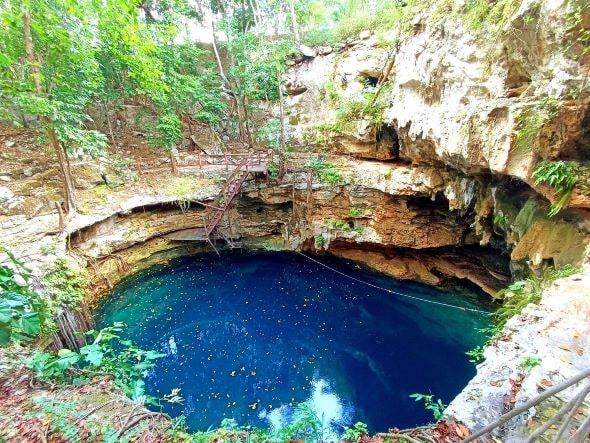
Cenote Lol-Ha
Cenote Lol-Ha is around 12 miles from Chichen Itza. It is worth the journey to get there. Cenote Lol-Ha is one of the most beautiful and secluded cenotes in the Yucatán Peninsula. It is set in the picturesque jungle with waters that glisten a brilliant blue as a result of sunlight piercing the jungle canopy. It is ideal for both swimming and snorkeling since its waters are 30-50 feet in depth. The entrance fee is around $50 pesos.
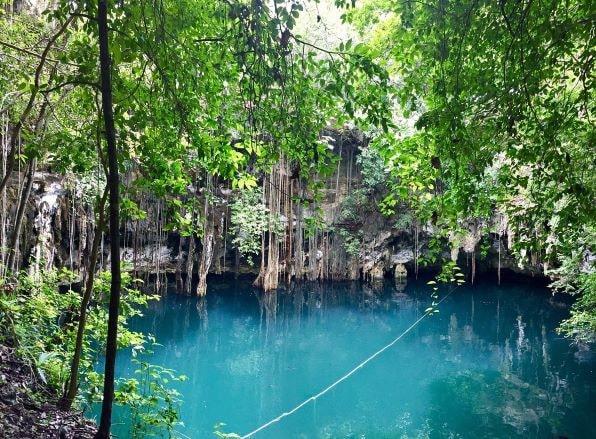
Cenote Yokdzonot
In 2007, Cenote Yokdzonot opened its doors as a Maya Wellness Resource and Eco-Adventure Destination, offering a wide range of quality services and special attractions for locals and tourists. It is located near the Mayan ruins of Chichen Itza. Today, it continues to be administered and operated locally by the cooperative "Zaaz Koolen Haá" (clear water, in maya). The cooperative has 17 members - the majority of them women- who work on the premises on a daily basis and all were involved in the cenote project from the beginning. The prices vary because of the multitude of options such as restaurant, bicycling, rappel, zip-lining, camping and hammocks.
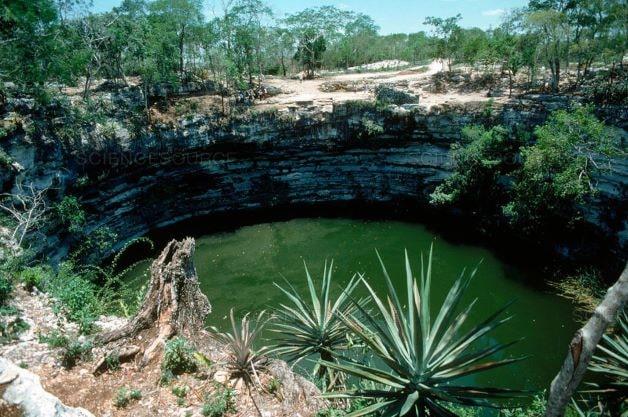
Cenote Sagrado
The majority of the cenotes in Chichén Itzá are mature, vast and open-air. The 'Sacred Cenote,' the most well-known of the Chichén Itzá cenotes, is located inside the archeological site and is only a few hundred meters from the famed pyramid of Kukulkan. The cenote was investigated in the early 1900s, when gold, jade, ceramics, sacrificial objects and sacrificial human remains were discovered here. Cenote Sagrado has a diameter of 60 meters and is surrounded by vertical cliffs up to 27 meters tall. In this cenote, swimming is not permitted - but you really would not want to anyways.
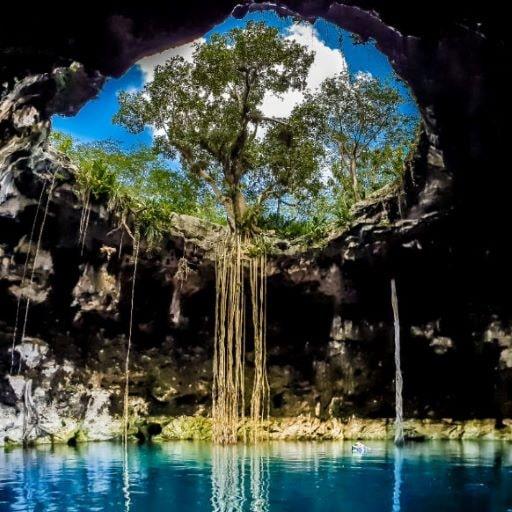
Cenotes Santa Barbara
The Santa Barbara Cenotes are located southeast of Mérida, Yucatán, in the small town of Homún. This entire area has an abundance of cenotes but Santa Barbara definitely holds its own. On the property of Santa Barbara, there are three cenotes (Cascabel, Chaksikin, Xoch) to visit. Along with access to the cenotes, your admission ($280 pesos with meal and $200 pesos w/out a meal) includes lifejacket and a choice of three options for transportation: walking, biking, or horse-drawn carriage. The three different types of cenotes are all here: cave, semi-open, and open. Each of the cenotes has its own unique charm and beauty. One of the advantages of going to Santa Barbara is that you get to explore all three cenote types in one hacienda.
Conclusion
Mexico’s Yucatan Peninsula has so many other cenotes that our list could go on and on. The area itself has been covered in many National Geographic articles so much so that local legend has become public knowledge.
So now when you think of visiting Mexico’s white sand beaches and its crystal clear water you can think of visiting the Yucatan. Cenotes were once secrets of the ancient Maya but should now be part of any vacation to Mexico.
Cenotes are awesome, but there is so many more Yucatan adventures to check out.

